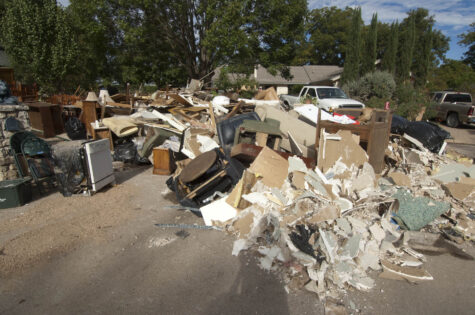
Halloween Flood 2013 Aftermath, Austin Texas.
It’s all around us but masked by “noise” in the media; enabled by fairness in journalism, driven by myth that has been propagated by experiences that we as a society have never before experienced. When Unprecedented drought in California was replaced by unprecedented flooding, the paper says: “The media, resource management entities, and the scientific community have already started to inquire as to why there was such a sudden switch from extensive drought to the other extreme.”
The signs are everywhere, but the public reaction, including media, advocacy and policy leaders, remains entrenched in thought from the previous century. In the south central US over the last 6 to 8 years too, unprecedented drought was immediately followed by flooding of a magnitude not seen in thousands of years. The heat extremes that caused the drought have increased 10 to 100 times in the last 30 years and the flooding that followed immediately thereafter was represented the 1,900-year to 2,300 year events.
We all know that flood follows drought, this is the normal way of weather. But when the science has been telling us for 30 years that warming will bring extremes far beyond those encountered in history, why do we continue to ask?
The reason is that policy demands that climate change be backed up by modeling and modeling our vast climate system is quite difficult and fraught with statistical uncertainty until vast amounts of data can be collected to confirm that actual weather events are indeed caused by a changed climate. This is one of the biggest downfalls of climate science today: that attribution of actual climate change-caused weather is based on modeling, and modeling sets policy.
The cause in both cases: increasing Pacific Ocean weather patterns, predicted for a generation. It’s the El Nino/La Nina and Pacific Decadel Oscillation cycles (El Nino and the Blob), amplified by warming. The connection to climate change has been advertised for so long that it should be ingrained in our collective consciousness. Climate change increases extremes. Yet the questions we here everywhere are, “Was this climate change?”
The modeling that has confirmed the climate change connection, like much of the plethora of weather attribution modeling over the last decade however, is apparently not good enough to overcome 30 years of climate culture that continues to take an irrelevant course: Weather extremes have occurred naturally before.
It’s a conundrum that only deep thought (or direct experience) can resolve. It’s obvious what the answer is, and a decade of extreme weather attribution science has confirmed. But until the climate change discussion deadlock is broken, we will continue to progress farther into earth systems changes that become unrecoverable unless their initiations are reversed.
Wang et al., California from drought to deluge, Nature Climate Change, July 2017.
